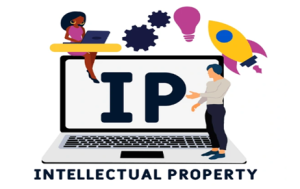Licensing is fundamental to a knowledge-based economy, facilitating technology transfer across all sectors while promoting…
How to Negotiate a Strong IP Licensing Agreement: Key Clauses to Include
Important agreements for Intellectual Property (IP), which include licensing in IP, are the backbone of commercialization of the innovation-involved businesses and individuals in monetizing the intellectual property that is owned such as patents, trademarks, copyrights, and trade secrets. Such agreements allow a licensee to use IP with an assured retaining right for the licensor, along with financial benefits.
The process of negotiating a strong IP licensing agreement is not an easy task because it takes meticulous planning, as such contracts are complicated and mostly deal with long-term commitments. Good agreements are prevention of disputes, maximization of profits, and assurance of compliance with the relevant legal laws. In this article, we will look at the key clauses that every IP licensing agreement must have and also give a practical insight into how to negotiate terms protecting interests for both parties.

Scope of the License: The scope of an IP licensing agreement is one of the first and most important matters to address. It needs to state clearly what intellectual property is being licensed, how it can be used, and the limits on its application.
For example, a patent licensing agreement should specify whether the scope of the license is for the entire patent portfolio or only for certain specific patents. In the same manner, for trademarks, an indication needs to be made whether the licensee is entitled to use the trademark in all product categories or in only a particular industry.
Apart from this, geographical limitations need to be included. For instance, if a company wishes to license its technology for usage only in Europe, then it should clearly state that the rights do not purport to cover North America or other regions. Similar importance must also be given to the duration of the license, whether it is a perpetual license or strictly for a fixed number of years.
Exclusive and Non-exclusion Licensing
Another major clause relates to whether the license is exclusive or non-exclusive.
Exclusive: This means that, within a certain market or industry, the licensee has “sole”: the licensing party cannot exploit the IP in the contract period.
Non-Exclusive: The granting of identical rights by the licensor to a series of licensees will maximize revenues through a wide distribution of the rights.
The decision between both these options is the business strategy of the licensor. For example, software houses, which want to distribute their product widely, prefer a non-exclusive license. Pharmaceutical companies, on the other hand, will probably use an exclusive arrangement so that a single licensee will have a strong position in the market.
Royalty Structure and Payment Terms
Money is often the most hotly contested issue for IP licensing agreements. Royalty structures must thus be clearly defined and relate to things such as:
- Fixed Royalties: A predetermined lump sum paid by the licensee and most commonly used in software or patent licenses.
- Percentage-Based Royalties: Royalties generated as a percentage of the sales revenue from the product or service licensed.
- Hybrid Models: Combination of fixed payments and percentage-based royalties.
Additionally, payment frequency (monthly, quarterly, annually) and reporting obligations must be established to ensure transparency. Some agreements also include minimum royalty commitments, ensuring the licensee generates a baseline revenue to maintain the license.
Quality Control and Compliance
For trademark and brand licensing agreements, quality control is crucial. The licensor should include clauses that allow them to monitor and enforce quality standards to maintain brand reputation.
For example, a licensor granting rights to a fashion brand should retain the authority to inspect products and packaging to ensure consistency with brand identity. Failure to adhere to these standards could result in termination of the agreement.
Additionally, compliance with local and international IP laws should be mandated to prevent unauthorized sublicensing or counterfeit production.
Sublicensing and Assignment Rights
It should be clear in the agreement whether the licensee is entitled to sublicense to third parties the relevant intellectual property rights. If sublicensing is permitted, it must be specified under what precise terms such sublicensing is to occur. Assignment clauses similarly stipulate whether a licensee is a company that could transfer rights to another company, as in the case of a merger or acquisition. Most licensors put conditions on their assignment to ensure that their IP will not be in the hands of competitors.
Indemnification and Liability Indemnification clauses protect both parties against legal risks due to third-party claims. For instance, if a licensor licenses software to a person or company and some third party later brings out a claim stating that the software infringes on its patent, an indemnification clause would say who is responsible for the legal defense and damages.
Indemnification usually consists of the following:
- Licensor Indemnification: Protects a licensee if licensed IP is later discovered to infringe another’s rights.
- Licensee Indemnification: Guarantees the licensee incurs liability for any damage caused by misuse of licensed IP.
Limitation of liability provisions should also form part of the agreement to limit financial exposure in the event of legal disputes between the parties.
Termination and Renewal Conditions
A good licensing agreement must have very specific termination provisions. Common triggers for termination would be:
- Violation of terms of the agreement (for instance, non-payment of royalties)
- Failure of the license period that had been agreed upon
- Any bankruptcy or insolvency of both parties
Some agreements will automatically renew by an extension in licensing into an additional period without the formal objection of either party. Other renewals, however, will require negotiations to be made within the above term.
Confidentiality and Non-Disclosure
Licenses usually carry buried proprietary information, and the confidentiality clause averts trade secrets, formulas, and unpublished patents from exposure.
For instance, in such agreements as technology transfer licenses, the licensor may require disclosure to the licensee of critical technological specifics. The non-disclosure agreement prevents the licensee from going to the competitors with this information. Confidentiality should go on even after the end of the licensing agreement to prevent misuse of sensitive data.
Dispute Resolution Mechanism
Any business relationship might have a conflict arises now or the next time. Therefore, the agreement should include a clear dispute resolution mechanism that contains whether disputes between the parties will be resolved by arbitration, mediation, or litigation.
- Arbitration: Generally considered the best option as it will involve a neutral third party resolving the issue-due to the fact, and costs can be less than litigation or mediation-of that usually recommended for international agreements
- Mediation: A less formalized arrangement where a mediator helps negotiate an outcome between parities involved in a dispute.
- Litigation: Court proceedings, available only as a last resort, due to both costs and lengthy timeframes.
Further, it should include jurisdiction-the laws of which country will govern the contract-within the agreement.
Negotiating a strong IP licensing agreement requires careful attention to detail to ensure that both parties are adequately protected. By providing commentary and addressing specific aspects and limitations, key clauses such as license scope, exclusivity, royalties, quality-control, indemnification, termination, and dispute resolution position businesses to minimize risks and maximize value.
Whether entering into an agreement with another company to license proprietary technology or attempting to commercialize a new invention, the art of negotiation focuses on achieving the best possible outcome with an equally important focus on drafting a well-written agreement. Involving a seasoned IP attorney further elevates the negotiation by ensuring the agreement meets legal standards and minimizes disputes down the road.
By putting in the time to develop a watertight agreement, licensors and licensees can reach fruitful partnerships, realizing the full value of their intellectual property assets.
References
- Bouchoux, D. E. (2013). Intellectual Property: The Law of Trademarks, Copyrights, Patents, and Trade Secrets. Cengage Learning.
- Kinsella, S. (2018). Against Intellectual Property. Ludwig von Mises Institute.
- Jorda, K. F. (2007). “Patent Licensing: Strategy, Structure, and Skill.” Fordham Intellectual Property, Media & Entertainment Law Journal, 17(4), 1085-1110.
- WIPO (2023). Guide to Intellectual Property Licensing. World Intellectual Property Organization.
- Lemley, M. A. (2008). “Intellectual Property Rights and Innovation.” Stanford Law Review, 61(2), 609-651.


